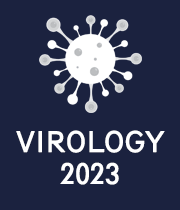Title : Immune Response after 24 months of Antiretroviral Therapy in Patients with HIV and Hepatitis B or C Virus Co-Infections in Kumba Health District, South West Region of Cameroon
Abstract:
Hepatitis B (HBV) and C (HCV) are two among the numerous forms of infections whose clinical degeneration, morbidity-mortality and low immune responsiveness in people living with human immuodeficiency virus (HIV) are highly evident. Co-infection between HIV, HBV and HCV has been associated with reduced survival, increased risk of progression to liver diseases and increased risk of hepatotoxicity associated to antiretroviral therapy. The aim of this study was to establish the prevalence of hepatitis B surface antigen (HBsAg) and hepatitis C antibody (HCVAb) among HIV-infected individuals, treatment outcomes and identified tha associated risk factors in Kumba Health, in the South West Region of Cameroon.
We performed a systematic screening using RDT (Rapid Diagnostic Test), for HBsAg (hepatitis B surface antigen) and HCVAb (hepatitis C virus antibody) among 299 HIV-positive patients enrolled at Kumba District hospital, CMA Kumba Town hospital and Banga-Bakundu Apostolic Hospital in Kumba Health District with all positives for HBV or HCV confirmed by the ELISA test. The results were analyzed using SPSS version 20 to determine the prevalence, the effect of hepatitis B and C in response to HAART in HIV patients and the possible risk factors.
For the follow up cohort (patients free of tuberculosis, participants not on option B+, participants with healthy life styles (non addiction to alcohol), and participants at most at stage III of HIV infection and not on treatment for more than one year) were involved. From the above 299 participants, a total of 52 HIV patients, 36 HIV/HBV and 12 HIV/HCV patients were involved in the prospective cohort study for 24 months follow up. We performed CD4 counts, viral load test, analyzed ALAT/ASAT, albumin, bilirubine, creatinine and measured the weights of HIV patients, HIV/HBV and HIV/HCV, enrolled in Kumba Health District.
Out of the 299 HIV positive patients screened for HBV and HCV, 36 (12.0%) were positive for HBV and 12 (4%) for HCV by both RDT and ELISA. In addition, majority of the study participants were Single/Cohabiting/Separated 160 (53.5%), Christians 282 (94.3%), Famers 100 (33.4%), and from rural areas 202 (67.6%).
Concerning the follow up of patients on HAART, here was a significant decrease in mean ALAT (p< 0001) and ASAT (p< 0001) values from baseline to 24 month follow up. The co-infection whether for HBV or HCV leads to significant increase (P?0.05) of transaminases all over the follow up period compared to mono-infected patients. Whether mono-infected or co-infected, there was a significant decrease of ALAT and ASAT over the time from baseline to 24 month in similar manner like total bilirubin level. Also, there was a general decrease in creatinine level in both mono and co-infected patients from month 6 to month 24 (HIV/HBV and HIV/HCV) and a total decrease of creatinine level for HIV/HCV from month 1 to month 24. We equally noted that irrespective of infection status, there were positive variations among these variables (CD4 and viral load) after 24 months though significant. The result of this study could be used for health decision making and proper follow up of HIV/HBV and HIV/HCV co-infected patients.
Keywords: HIV, hepatitis B and C, co-infection, prevalence, risk factors, immune response, Kumba Health District.


